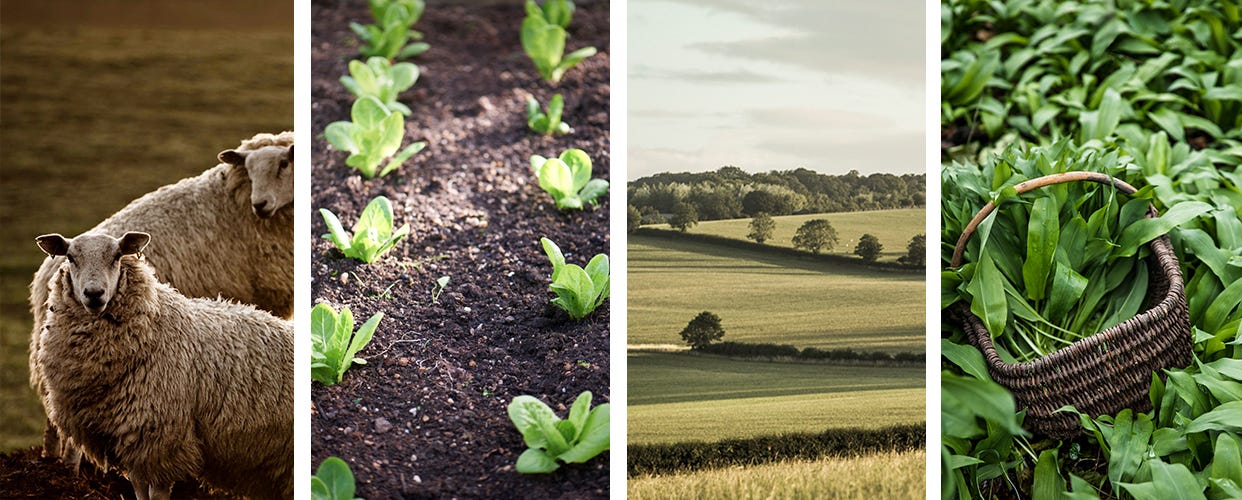
Notes from the Farm - March 2024
FROM RICHARD SMITH
Farm Managing Director
No1. Ewes and lambs
Lambing begins in April and we are looking forward to our Lambing Tours on Saturday 13th . All the pregnant ewes are now housed in our specially-built maternity units; we have around 1750 in the lambing shed in Daylesford and 2,500 up in Wootton. The majority of our flocks are pedigree commercial breeds, with some rare breed lambs such as Kerry Hills, Ryelands and Merino. To help them on their journeys to becoming mothers, we have scanned every single pregnant ewe. Pedigree breeds tend to be less prolific than commercial flocks, and this is true again this year – the average number of lambs per ewe in the Lleyn flock is 1.9, while most of our Merinos are pregnant with singles. Knowing how many lambs each ewe is expecting lets us prepare accordingly; ewes having twins or triplets will need more food than those having a single lamb. For optimum nutrition and health, we are very careful and selective in their diets, feeding them home-made silage and hay, with some fodder beet for extra protein.
Once the animals are happy we can make sure our shepherds are ready for their busiest time of year. Our own team works long, challenging hours during lambing and we also get extra help from night lambers, who stay up through the night with the ewes and lambs. This year we have some agricultural students with us, who assist with crucial tasks such as logging births and allocating maternity units.
Each lamb spends their first 48 hours of life in the warm, comfortable sheds with their mother, suckling and getting their fill of all-important colostrum. After that time, the most nourishing food for them is spring grass and they are ready to stretch their legs and socialise, so they join the flocks on the fields. If you go for country walks near working farms during lambing season, please be mindful that new mothers will be on high alert wanting to protect their babies, so please stick to paths and keep dogs on the lead.
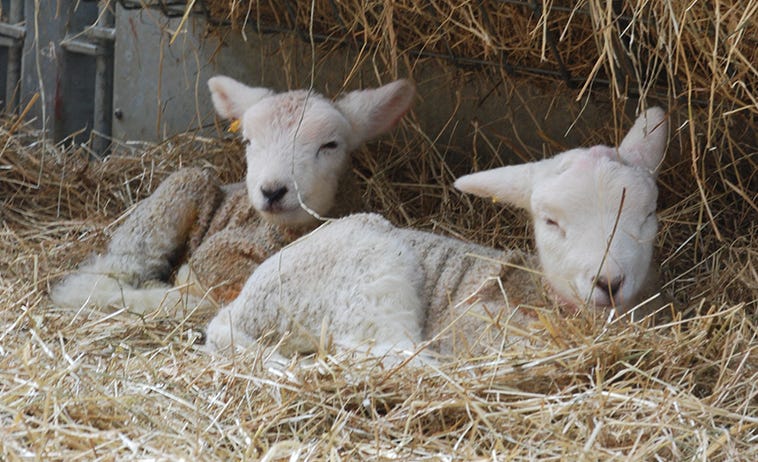

No2. Drilling and sowing
Despite the wet weather, we were able to find windows of opportunity to drill some seed, starting with wheat, barley and oats. The organic oats will feed our turkeys later this year and we are planning to make flour and beer with the wheat and barley. It been very wet all over the country and Daylesford is no exception – we are all hoping for a good dry spell of weather to dry the farm out.
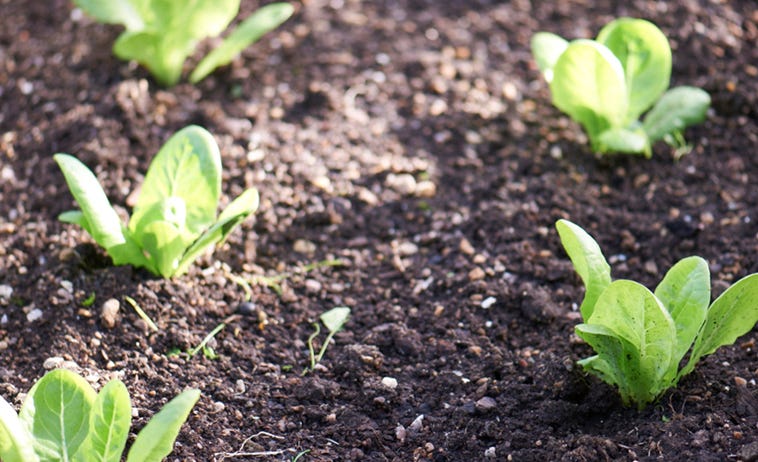

No3. Eggs and chicks
You could say that the laying hens are solar powered because as soon as spring brings more daylight hours, egg production increases. Every day our egg buggy visits the coops to collect brown and blue eggs and return them to the egg barn to be graded. Over the course of the year we collect over a million eggs from our truly free-range organic flock.
Our rare breed Legbar chicks have just hatched and are in the brooder shed under heat, with food and water. They will grow slowly, at their own pace, and once the weather warms up, they will range their organic pastures and enjoy pecking and foraging for insects in the clover leys. We raise all of the chicks, including the male cockerels, which we find actually help to bring a social order run when allowed to run with the flocks. The female chicks will be ready to lay their signature pastel blue eggs in around 24 weeks.
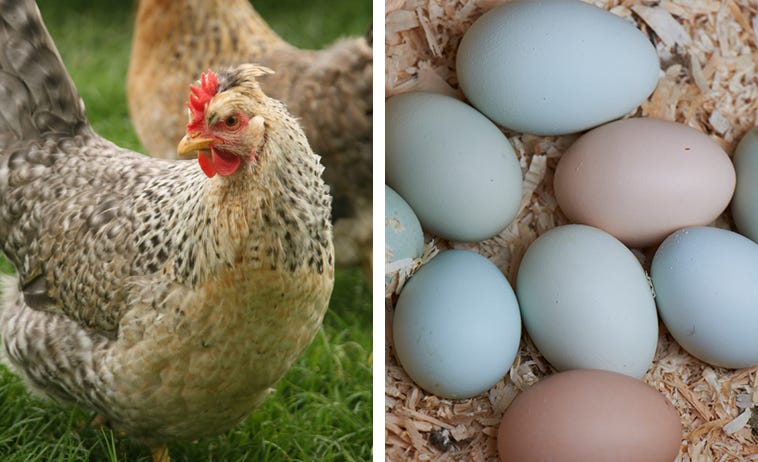

IN THE MARKET GARDEN
Early starts
There have been years in the past when we wondered whether we would have wild garlic in time for Easter. This year, the wild garlic started growing early and will be at the height of its season by the long weekend. The flavour of wild garlic is often stronger at the beginning of the season, so you may find you need fewer leaves for the same intense hit in recipes. Normally we start cutting wild garlic around mid-March, but this year our first crop was the 1st of March. In fact, all the perennials seem to be early; the chives and ornamental alliums came up before we expected, and the rhubarb was ready a whole month early.
Twice a week, Lauren from the Market Garden team heads out to find wild garlic in the woodlands in the grounds of Oddington house (interestingly, the area we harvest from used to be the heart of the original village before it was abandoned during the Black Death). She cuts up to 150 bunches for our kitchens and farmshops and takes care to forage sustainably – but wild garlic is such a prolific crop and can be cut twice, so there is always a plentiful supply during the season. The recent wet weather means the wild garlic is less prone to wilting, and regular and consistent rain washes the leaves, meaning we can forage from under tall trees where pigeons perch.
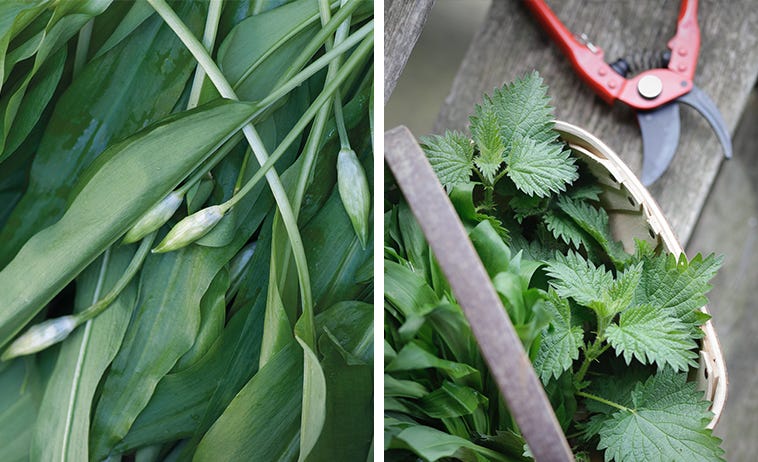

Rainy days
However, back in the Market Garden the wet weather means we cannot cultivate the ground –there are times when we feel a bit anxious about finishing it all. Thankfully the diversity of our crops gives us resilience, and our polytunnels offer an extra sense of security. We will start harvesting things like pea shoots soon and, in the meantime, we are spending time on the dormant season pruning and getting ahead with mulching. We are working on setting up “no dig” areas; aerating them ready to put in onion sets and other large seed crops.
Whatever the weather, there is always someone in the nursery from February until June, busy sowing seeds for cutting garden flowers and doing lots of propagation, potting on the chillies, tomatoes, cucumbers and climbing beans ready for the polytunnels.
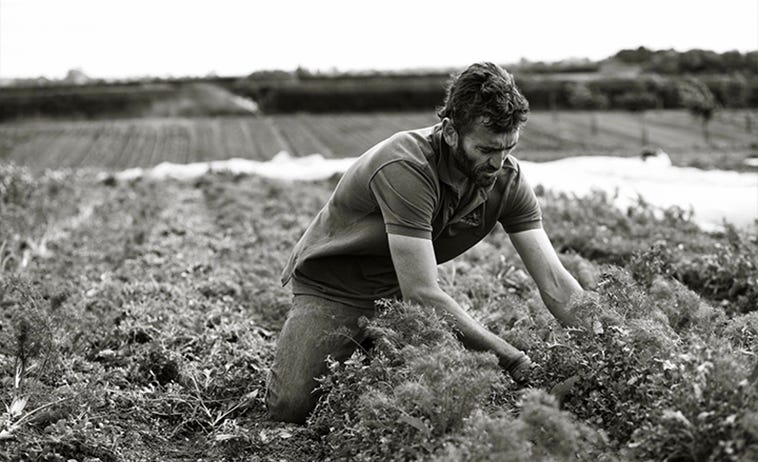

"For me, March is synonymous with the start of wild garlic season - nature's most pungent sign that spring is here. Our market garden team forages lots of leaves from the nearby woods in Oddington, which we tie into generous bunches ready to go into the farmshops. Plenty will also be sent to the pubs, where you can find all sorts of delicious wild garlic dishes on our various specials menus throughout the season.
The past month has felt particularly special to me as it marks one year since Daylesford and Bamford recieved B Corp accreditation. Not only does this demonstrate that the way we work is better for both people and planet, but it also initiated us into a global community that is striving to set the world on a different course. As we look to the future, I am proud to share the business's Impact Report, setting out our intentions for the year ahead and reflecting on our accomplishments from 2023. I look forward to continuing our story within B Corp's network of change-makers and hope that together, we can inspire others to engage in a more sustainable way of living and make the world a better place for future generations."


